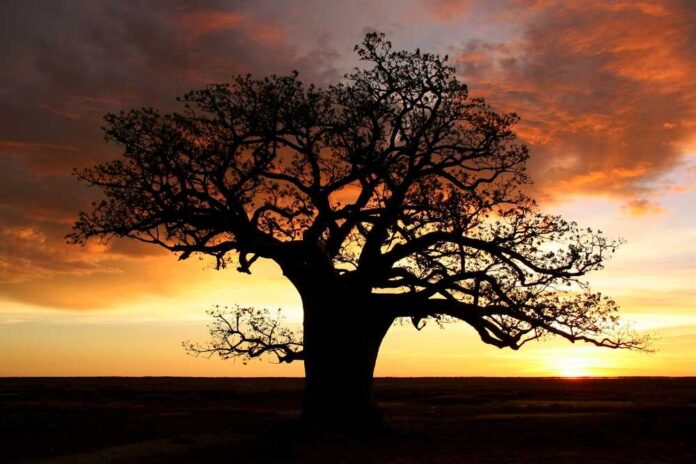Speculation about the mysterious baobabs, the enormous trees dubbed “the tree of life” and “mother of the forest,” has persisted for eons. A recent publication in Nature revealed the genetic makeup of eight different baobab species, leading the researchers to the conclusion that these trees first appeared in Madagascar.
For the first time, researchers from the Royal Botanic Gardens in the UK, Wuhan Botanical Gardens, the Queen Mary University of London, and the University of Antananarivo in Madagascar have tracked the interspecies gene flow of all eight baobab species. Their findings show that there is very little genetic diversity between any two species and that some species undergo inbreeding with more common ones. Insights on the current state of competition among baobabs provided by this data might aid in the preservation of these trees for future generations.
The baobab species is facing a steep decline on the island, which is home to six different varieties. Without major interventions, one of these species is projected to go extinct by 2080, making the study’s results all the more important. The collaborative research team also emphasized the critical need for immediate action. Without more action, climate models predicted the species might go extinct in 50 years.
A tropical ecologist based in Madagascar, Dr. Seheno Andriantsaralaza, agrees that the IUCN classification of some baobabs in Madagascar needs to be revised. The study provided important genetic data insights, but it was only a piece of the puzzle when it came to comprehending the gigantic trees’ evolutionary history and how they dispersed.
Based on the models employed in the study, baobab populations have been decreasing on the island for millennia, and the decline has been accelerated in recent decades due to human-caused climate change and continuing deforestation.
In addition to the conservation group Madagasikara Voakajy, PEER, a program supported by USAID, strives to give residents the authority to help manage the ecosystem in a sustainable way.


















